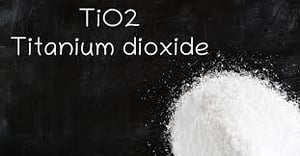TT Electronics plc (LON:TTG) has announced its interim results for the half-year ended 30 June 2020.
Summary
· As a result of actions taken, TT entered the pandemic well placed to withstand its impact and emerge strongly
· Decisive and well executed response to COVID-19
o Operational throughout due to actions and essential nature of products
o Employees protected, costs reduced, cash spend minimised
o Gradual recovery in organic revenue through the second quarter, after April low point; all sites now open and capacity improving
· Actively progressing strategy execution
o Significant self-help programme extended and underway, with expected 2023 run-rate benefits of £11-12 million
o Continued R&D investment at 5.0 per cent (2019: 5.4 per cent) of revenue1 for future growth
· Confidence in medium-term outlook and continuing to improve the quality of TT
o Robust balance sheet with substantial covenant and liquidity headroom
o Organic revenue growth and margin enhancement
o Disciplined M&A

Richard Tyson, Chief Executive Officer, said:
“Our people have responded exceptionally well to the challenges presented by COVID-19. The improvements we have made, positioning the business in higher technology, structural growth markets and delivering essential products to our customers, have allowed us to navigate the impact more effectively. Given the extent of the disruption around the world, the trading performance of the business in the period has been resilient, and we have retained a robust balance sheet. All our manufacturing sites are open and gradually returning to full capacity.
Our current expectation is that we will see improvement in the second half. There remains a range of possible outcomes for the year and, in light of this, our intention is to recommend a dividend at the 2020 year-end results announcement taking account of our performance for the year as a whole.
We have taken significant actions to improve TT’s long-term profitability and we will continue to create value through organic investment and acquisitions. The business is positioned in markets which will benefit from structural growth trends and where sustainability is driving further opportunities. This gives us confidence in the long-term future of the business.”
Note
1. Throughout this announcement we refer to a number of alternative performance measures which provide additional useful information. The Directors have adopted these measures to provide additional information on the underlying trends, performance and position of the Group with further details set out on page 35. The adjusted measures used are set out in the glossary on pages 41 to 49.
CHIEF EXECUTIVE OFFICER’S REVIEW
Introduction
Our work since 2017 to reposition the portfolio meant we entered 2020 in a strong strategic and financial position, and we took decisive action to respond quickly and effectively to the COVID-19 outbreak. We have mitigated its impacts on the business and retained the financial and operational flexibility to pursue value creation through organic investment, as well as inorganic opportunities.
As a result of our early experiences managing COVID-19 at our operations in China, we were able to roll-out a framework of effective controls across TT’s international locations. Our actions have helped us to protect our workforce and their families and enabled us to continue to deliver our essential products to customers, with just a few sites temporarily closed.
We have now commenced the execution of a significant self-help programme initially announced in March. This programme has been extended to take account of subsequent changes to demand patterns and it will reduce our fixed cost base and our carbon footprint. Having responded to the short-term issues created by COVID-19, we are continuing to progress the execution of our strategy.
Medium-term demand projections in our target markets have reinforced the conviction in our strategy. We are positioned in structural growth markets, each with a sustainable world at their heart. These include aerospace and defence, medical and industrial robotics and automation markets. Our focus is on providing products and services for critical applications, which deliver cleaner and smarter solutions, and which promote personal wellbeing.
Results and operations
Group revenue was £210.0 million in the period with organic revenue 14% lower. Underlying operating profit was £11.4 million, down 41 per cent at constant currency, largely reflecting COVID-19 disruption and inefficiencies. After the impact of adjusting items including restructuring, the Group’s statutory operating loss was £2.9 million.
The Group’s monthly organic revenue1 performance showed a gradual recovery through the second quarter, following the first half low point in April. All sites are now open, and our overall operational capacity is improving, as shielded and vulnerable employees gradually return to work.
Organic revenue in the period was lower because of the impact of COVID-19. Against this backdrop, we saw another comparatively resilient performance from Global Manufacturing Solutions with organic revenue 10 percent lower. This was better than the Group average due to the ramp-up of new business previously won in North America, its exposure to more resilient Asian markets and a focus on the right customers, delivering critical products in essential market areas. In Power and Connectivity organic revenue was 19 percent lower and in Sensors and Specialist Components 16 percent lower. This result was driven by the divisions’ exposure to commercial aerospace and industrial markets, temporary shutdowns at a few facilities and operating constraints as a result of shielding vulnerable employees.
During the period, we have controlled our costs, including implementing a hiring freeze, eliminating discretionary expenditure and limiting our capital expenditure to essential items only, as well as implementing a temporary Board pay reduction. In addition, during the second quarter, we accepted some of the available labour support from the UK government, while we had a significant number of UK employees shielding. This amounted to £1.1 million in total and we stopped this support from the end of June 2020. We have no plans to claim the UK government job retention bonus.
Our cash management actions have helped us to preserve cash, with underlying operating cash conversion of 61 percent and an underlying operating cash inflow of £7.0 million in the period.
Financing, liquidity and debt
We entered 2020 with a robust balance sheet, including a defined benefit pension scheme fully funded on an actuarial basis. At 30 June 2020 net debt was £89.0 million (31 December 2019: £69.1 million), including IFRS 16 lease liabilities of £15.7 million (31 December 2019: £17.6 million). The increase in net debt was largely due to £14.2 million ($18.7 million) of payments, including normal working capital adjustments, relating to the Covina Power Solutions acquisition which completed in early January 2020.
At 30 June 2020, net debt/underlying EBITDA was 1.6 times, within the Board’s target leverage of 1-2 times net debt/underlying EBITDA. Our £180.0 million of debt facilities mature in November 2023 and this provides us with ample liquidity, with available cash and undrawn facility headroom of £93.8 million at 30 June 2020. Taken together, this provides good financial flexibility, enabling us to take advantage of opportunities in this uncertain environment.
Globally, COVID-19 infection remains widespread and, in many geographies, rates are still rising. The global outlook remains extremely hard to predict. Accordingly, we are focused on pursuing all available actions to minimise our leverage ratio and maximise our liquidity headroom in order to navigate all risk scenarios.
Dividend
The Board has decided, taking into account the disruption from COVID-19 and our desire to retain flexibility and preserve the Group’s financial strength, not to pay an interim dividend for 2020.
It is the Board’s intention to recommend the payment of a dividend in respect of the full year 2020. The amount of this dividend will be determined at the time of our final results announcement in the first quarter of 2021 and will take account of our financial performance for the year as a whole.
Our markets
Our strategy is to grow TT and create value for our stakeholders including customers, employees, the communities in which we operate and shareholders. We do this by focusing on building positions in our target markets of aerospace and defence and medical, and in industrial applications where there are advanced technology requirements. Although, we have seen significant market disruption in the period, the long-term attractiveness of these markets is intact. We believe some of the positive trends previously evident in these markets will be accelerated in the coming years, as the lessons from the COVID-19 outbreak are applied.
In aerospace and defence (22 per cent of Group revenue in H1 2020) , the commercial aerospace market is undergoing a production reset as a result of COVID-19 adversely impacting demand. Nonetheless, we anticipate seeing a gradual recovery over several years and expect our capabilities, which focus on fuel efficiency and safety, to remain a priority. The defence market has been largely unaffected by the pandemic and has continued to grow with strong US Department of Defense investment outlays in the period. The outlook for defence over the next few years remains positive, with budgets and spending largely driven by geo-political and security considerations. The need for TT’s electronics and the ability to design and manufacture smaller, and lighter products will remain.
In medical (24 per cent of Group revenue in H1 2020), there has been a short-term focus on providing solutions to combat the COVID-19 outbreak. During the peak of the outbreak we worked with different cross-sector teams to provide urgently needed products. We used this opportunity to showcase TT’s capabilities, and this has resulted in further business opportunities. Elsewhere, large installations for hospital or life science applications, and products for elective applications have been deferred into 2021 and beyond. Nonetheless, the need for more and better medical equipment and for improved efficiency remains a priority around the world. COVID-19 has reinforced the need for telemedicine, device connectivity and remote patient monitoring capabilities, among others. These are all TT specialisms.
In industrial markets (44 per cent of Group revenue in H1 2020), which have been impacted by reduced physical access to sites and assets during the pandemic, the limitations of traditional ways of working have become clear. In the aftermath of the pandemic, we expect certain technologies, including automation; robotics; remote asset tracking, monitoring, inspection and control to become even more important. TT has a diverse set of capabilities today that can meet this future demand.
Margin enhancement
We remain confident in our journey to double-digit Group operating margins and this continues to be driven primarily by three factors:
· Operational leverage from organic revenue growth;
· Reductions in our fixed costs; and
· Inorganic expansion to develop our technology offerings and market positions.
A key part of our plans to deliver double digit margins is our self-help programme, which will reduce our footprint and fixed cost base. As previously announced, given the weakness in certain end-markets, we have expanded the original 2020 programme to include additional headcount reductions. The overall cash cost is expected to be circa £18 million, of which just over £8 million will be spent in 2020, with the remainder primarily in 2021. Initial benefits from the programme will be realised in 2020 and 2021, helping to mitigate the slowdown in weaker end-markets. These will build to the expected full run-rate benefits of £11-12 million in 2023.
The total expense for the self-help programme is anticipated to be £24 million, with £14 million incurred in 2020. In addition to the cash costs above, this incorporates non-cash items, primarily asset and inventory write-downs and the impairment of intangibles.
The programme includes the closure of our Barbados, Corpus Christi (Texas) and Lutterworth (UK) sites. It further consolidates our manufacturing footprint, making us more efficient and reducing our carbon emissions. At the same time, we are rationalising and taking end-of-life some products and relocating the manufacture of other product lines within our existing footprint. This will enable us to serve customers better and achieve an improved level of profitability. Taken together, all these actions will result in a net reduction of around 500 in our employee headcount. This is a reduction on the 31 December 2019 Group headcount of approximately 11 per cent.
Technology investment
Investment in Research & Development (R&D) is one of our top capital allocation priorities, recognising its importance as a contributor to value-add revenue growth. We have continued to invest in this area with R&D spend of £5.7 million (2019: £7.1 million) in the period. This amounts to 5.0 percent (2019: 5.4 percent) of aggregate revenue in Power and Connectivity and Sensors and Specialist Components.
We are bringing a pipeline of exciting new opportunities to market. A few examples of this include:
· Within Power and Connectivity, TT has been selected as the primary supplier for the custom design of a miniature High Voltage Transformer and Inductor assembly for a next generation implantable cardiac rhythm management device. This opportunity builds on TT’s expertise in this growing medical market, leveraging the design expertise at its Minneapolis (Minnesota) facility and manufacturing capabilities at its Kuantan (Malaysia) facility;
· Also, within Power and Connectivity, TT has launched its innovative S-2 Connect (speed to connect) system, enabling customers to deploy an ‘Internet of Things’ strategy quickly and cost effectively. S-2 Connect has multiple applications including asset and cargo tracking; remote energy, security and temperature monitoring; rail communications; wearable technologies and home healthcare applications. The division has already won its first major contract award, helping to support the roll-out of a low carbon and energy efficiency programme across a residential property estate;
· Within Sensors and Specialist Components, TT is bringing to market its Defibrillation Pulse Chip Resistor (DPCR). This is the only pulse chip resistor in the market today that is aimed specifically at defibrillator applications. The DPCR protects the sensitive monitoring equipment attached to patients from electrical pulses and increases the effectiveness of defibrillation. It is currently undergoing approval testing at a number of global medical equipment suppliers.
In addition, Power and Connectivity received a contract award in the period for the development of a power converter for a European military aerospace platform, in conjunction with a major defence customer. The division has also been supporting the development of a non-clinical virus testing device which is undergoing field trials.
M&A strategy and vision
Another important piece of our strategy is M&A. We have a successful track record, creating value and increasing the quality of TT. We have invested in attractive, growing and higher margin segments that we know well and where we have competitive advantage. Our acquisition strategy enables us to penetrate new geographic markets, acquire new customers and create synergies.
We are really pleased with the performance of our recent acquisitions, Power Partners (completed March 2019), based in Boston (Massachusetts), and the Covina (California) based power supply business of Excelitas Technologies Corp. (completed January 2020). Since acquisition, Power Partners has won new medical and connectivity work, and this success has continued in the period. The Covina business has already won its first award under TT ownership, for the development of a customised power supply product for a military aircraft upgrade. This was the result of its introduction to an existing TT customer, giving further confidence in our North American strategy. This strategy has added to our competitive advantage, enabling us to beat an incumbent with our enhanced capability.
Our M&A strategy is helping us to build our power solutions capabilities in North America and is accelerating our success in this higher margin growth market. We see good opportunities to continue to build on this success.
We have retained our financial flexibility and we act with discipline. We are actively monitoring an improved pipeline of potential opportunities.
Outlook
Our people have responded exceptionally well to the challenges presented by COVID-19. The improvements we have made, positioning the business in higher technology, structural growth markets and delivering essential products to our customers, have allowed us to navigate the downturn more effectively. Given the extent of the disruption around the world, the trading performance of the business in the period has been resilient, and we have retained a robust balance sheet. All our manufacturing sites are open and gradually returning to full capacity.
Our current expectation is that we will see improvement in the second half. There remains a range of possible outcomes for the year and, in light of this, our intention is to recommend a dividend at the year-end taking account of our performance for the year as a whole.
We have taken significant action to improve TT’s long term profitability and we will continue to create value through organic investment and acquisitions. The business is position in markets which will benefit from structural growth trends and where sustainability is driving further opportunities. This gives us confidence in the long-term future of the business.
BOARD
On 6 May 2020, Warren Tucker succeeded Neil Carson as Chairman. On 3 April Stephen King, Senior Independent Director, announced he will be stepping down from the Board in September 2020, after nine years’ service. As a consequence, Jack Boyer became Senior Independent Director with Anne Thorburn becoming Chair of the Audit Committee.
FINANCIAL OVERVIEW
Group revenue was £210.0 million (2019: £238.2 million) and this included favourable currency translation of £1.0m and a contribution from acquisitions of £4.9 million. Group organic revenue was 14 per cent lower than H1 2019 with lower sales volumes, including in commercial aerospace and industrial markets, although defence markets remained strong.
The Group’s statutory operating loss was £2.9 million (2019: £6.9 million profit) and included restructuring costs of £11.4 million (2019: £8.2 million, including £0.4 million of pension contributions). The restructuring costs predominantly relate to the expanded 2020 self-help programme, comprising £5.2 million related to severance costs, £4.9 million of intangible and fixed asset write-downs as a direct result of the restructuring and £1.3 million of other restructuring costs.
In addition, also included within the operating loss, there was amortisation of intangible assets arising on business combinations of £2.0 million (2019: £2.6 million) and other acquisition and integration related costs of £1.9 million (2019: £1.5m). There was a £1.0 million credit (2019: £nil) relating to the full and final settlement of product warranty claims relating to the Transportation business divestment in 2017.
Underlying operating profit was £11.4 million (2019: £19.2 million) being adversely impacted by the lower sales volumes above. There were operating inefficiencies as a result of site closures as well as shielding vulnerable employees, and from additional operating controls and measures put in place in response to COVID-19. These were partially offset by lean initiatives, cost reduction across the divisions and government furlough monies received. Also included within underlying operating profit were unallocated corporate costs of £3.3 million (2019: £3.5 million).
The net finance cost was £1.9 million (2019: £1.8 million). The Group’s overall tax credit was £0.4 million (2019: £0.2 million credit), including a £2.1 million credit on items excluded from underlying profit (2019: £3.2 million credit). The underlying tax charge was £1.7 million (2019: £3.0 million), resulting in an effective underlying tax rate of 17.5 per cent (2019: 17.2 per cent).
Basic earnings per share (EPS) was a loss of 2.7 pence (2019: 3.9 pence profit) being adversely impacted by the net specific adjusting items set out above. Underlying EPS decreased to 4.8 pence (2019: 8.8 pence), reflecting the lower underlying operating profit in the period.
The net accounting surplus under the Group’s defined benefit pension schemes increased to £35.2 million (31 December 2019: £16.6 million surplus). The increase included higher than expected returns on plan assets, with an increase in the value of liability hedging assets, primarily due to the significant fall in gilt yield. There were also £2.7 million of scheduled deficit reduction contributions in the period. The surplus increase was partially offset by other movements, including the impact of changes in discount rate and inflation assumptions, due to falling corporate bond yields
Underlying operating cash flow was £7.0 million (2019: £5.4 million). Despite lower profitability, the increase in part reflected the Group’s tight cash management with lower capital and development expenditure at £4.5 million (2019: £9.3 million). There was a working capital outflow of £9.4 million (2019: £15.1 million outflow) as reduced demand and customer order deferrals adversely impacted planned inventory reductions, as well as resulting in lower payables. However, there was an inflow during the period from lower receivables as a result of reduced revenue and from close management of amounts due from customers. Underlying operating cash conversion was 61 per cent (2019: 28 per cent).
There was a free cash outflow of £5.2 million (2019: £9.2 million outflow), including £4.7 million (2019: £3.2 million) of payments relating to the new self-help programme. Pension payments in the period were lower at £2.7m (2019: £6.0 million), with the prior period including a one-off £3.4m payment relating to the merger of the Stadium Group Retirement Benefits Plan (1974) scheme into the TT Group scheme.
Not included within free cash flow were acquisition payments of £14.6 million (2019: £2.3 million) reflecting the January 2020 acquisition of the power supply business of Excelitas Technologies Corp. and deferred consideration relating to a prior period acquisition. There was no dividend payment in the period (2019: £7.4 million).
At 30 June 2020 TT Electronic’s net debt was £89.0 million, including lease liabilities (31 December 2019: £69.1 million). Net debt/underlying EBITDA was 1.6 times (31 December 2019: 0.9 times).








































